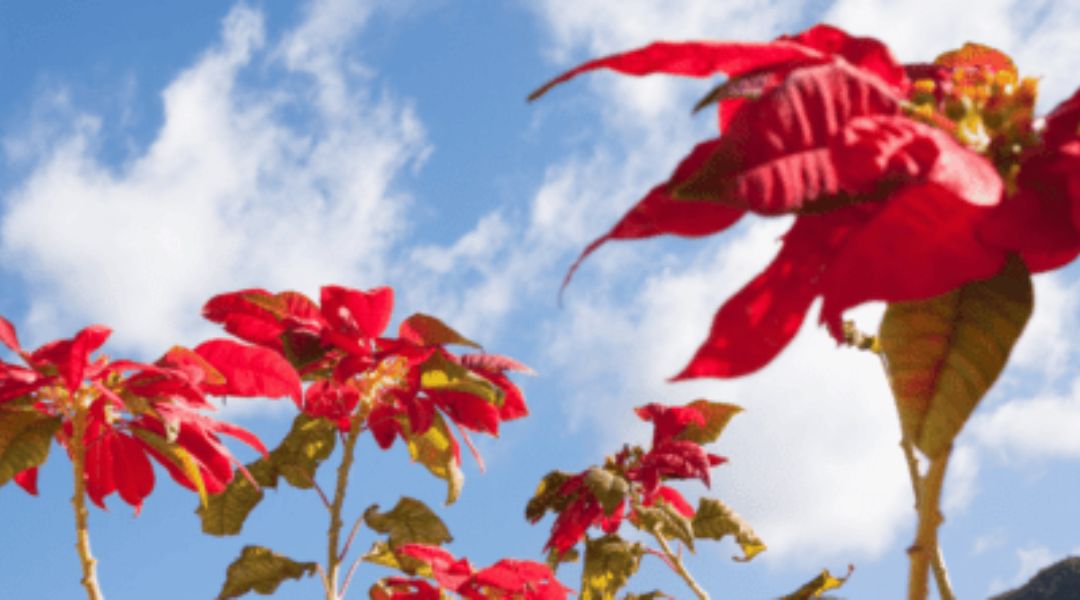Not Euphoria, Euphorbia! If you’re on this page, you may know what I’m talking about!
Where I live (Los Angeles, California) Euphorbia is EVERYWHERE. Well, in general, Euphorbia is pretty much everywhere.
There are over 2,200 species of the plant! That is A LOT. That makes it the second largest genus of plants in the world. Right now I can see Karen shaking her head quizzically: Euphorbia? Everywhere? Never heard of it! Yes, Karen, Euphorbia. You even have a few in your yard!
Karen has the euphorbia most people know by the name of Sticks on Fire or Pencil Plant. Multiple pencil-width stems make up the bulk of this succulent. You may have seen this type of euphorbia: It can be either small or large, pale or vibrant depending on where it’s planted and the time of year.
Aside from Sticks on Fire, there are a lot of other euphorbias worth knowing about. Let’s talk about some of them.
Euphorbia Tirucalli
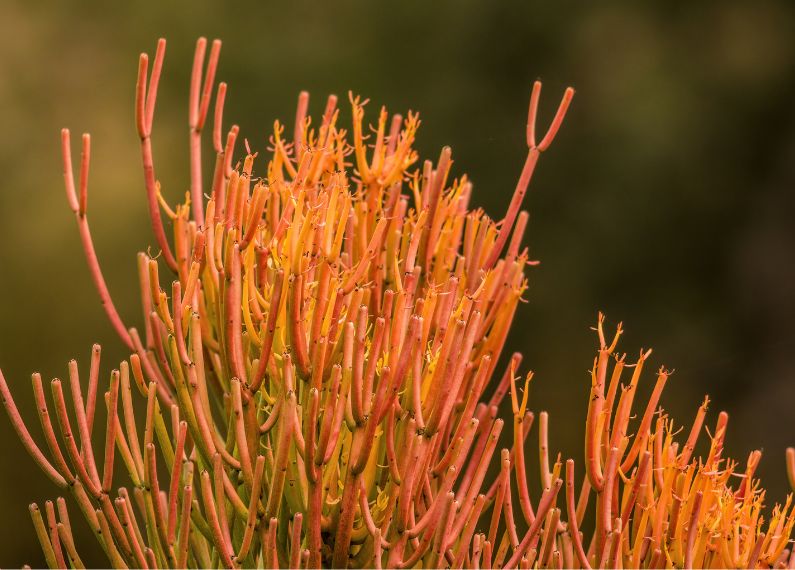
We’ll start with Euphorbia Tirucalli, the one Karen has in her yard. And if you want to cover all the bases, you can use the common name Spineless Pencil Cactus, Sticks on Fire, Fire Cactus or Milkbush.
Whatever you decide, this succulent has thin pencil-like stems, a milky interior sap, and usually, a reddish color at the top of its stems. And although it’s a succulent, it is not a cactus.
The sun makes the tips of the euphorbia turn colors, so if your Sticks on Fire aren’t on fire, you probably have too much shade (ahem, Karen). Or, too much water. The winter also brightens the red.
It’s not just the euphorbia’s color that can vary. This succulent grows to very different heights in different locations. Typically, this variety of euphorbia can grow up to 4-8 feet. But given full sun and dry conditions it can get to 20 or 30 feet! That makes it a pretty big succulent.
While this plant is everywhere, it’s also TOXIC. Not small ‘t’ or even “T” toxic but all caps: TOXIC.
The rumors and stories around this beloved garden plant are enough to, well, to NOT make you not want to plant it.
First off, all parts of the plant are toxic if ingested. But, that isn’t even the main problem (I mean, no one should be ingesting any old plant to begin with). There’s a warning when handling this (and most) type of euphorbia. The milky sap of Sticks on Fire can burn your skin. Gloves and protective goggles are recommended! It’s toxic to dogs, cats, horses, and you!
On the flip side, the good news about this type of euphorbia is that it’s resilient to most pests, including deer and rabbit. Which is no surprise . . . because it’s TOXIC.
But, the thing is, Sticks on Fire is a brilliant plant. A structurally splendid and dramatic upright focal point, Euphorbia tirucalli has no replacement. The structural beauty and color it adds to the garden is unparalleled. And when I use the term ‘focal point’, I mean that one is enough (maybe three if you must). Just don’t overdo it; this is not the Doritos of succulents!
Sticks on Fire can grow inside, but due to its toxic nature perhaps, or its love of sun, it is seldom used indoors. But I have seen other varieties of euphorbia used inside.
Euphorbia Trigona
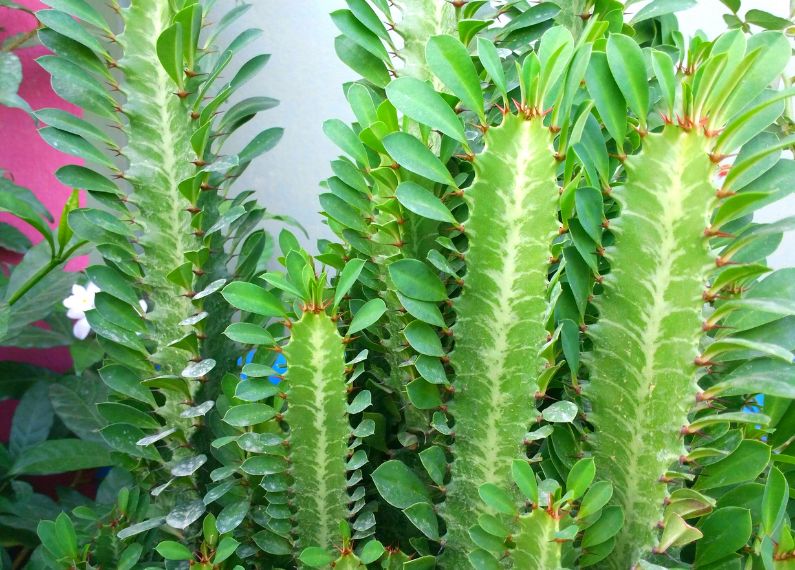
Another type of euphorbia is the African Milk tree (or Euphorbia trigona). This plant has interesting triangular stems, thus the name ‘trigona’. It has green stems and leaves. Another type of Euphorbia trigona—Euphorbia trigona rubra—has deep red on the stems and leaves.
The African Milk tree, like Sticks on Fire, likes it warm. If you live somewhere that dips below 50 degrees at night, you’ll need to move it inside. Luckily, this plant makes a good indoor plant.
But again, like Sticks on Fire, this plant has a sap issue. Yep, back to the sap! Did I mention it’s TOXIC? That milk or white sap inside this euphorbia can mess you up. If it gets in your eyes it can cause severe burning and blurry vision and will need to be treated. There are even case reports of permanent blindness from accidental ocular exposure to the sap. Yikes!
What’s more, this milky sap doesn’t need to reach your eyes to cause a problem. If you get some on your skin it can cause redness, swelling, and blistering. And if you eat it?! Forget about it.
Now for some good news. There are some lovely euphorbia varieties that look beautiful in the garden and are less toxic (let’s call them lowercase “toxic” vs. all caps,“TOXIC”).
In fact, it’s hard NOT to find a euphorbia that would work in a garden. I’m going to mention some of my favorites—and trust me when I say it’s hard to just mention a few.
Euphorbia “Ascot Rainbow”
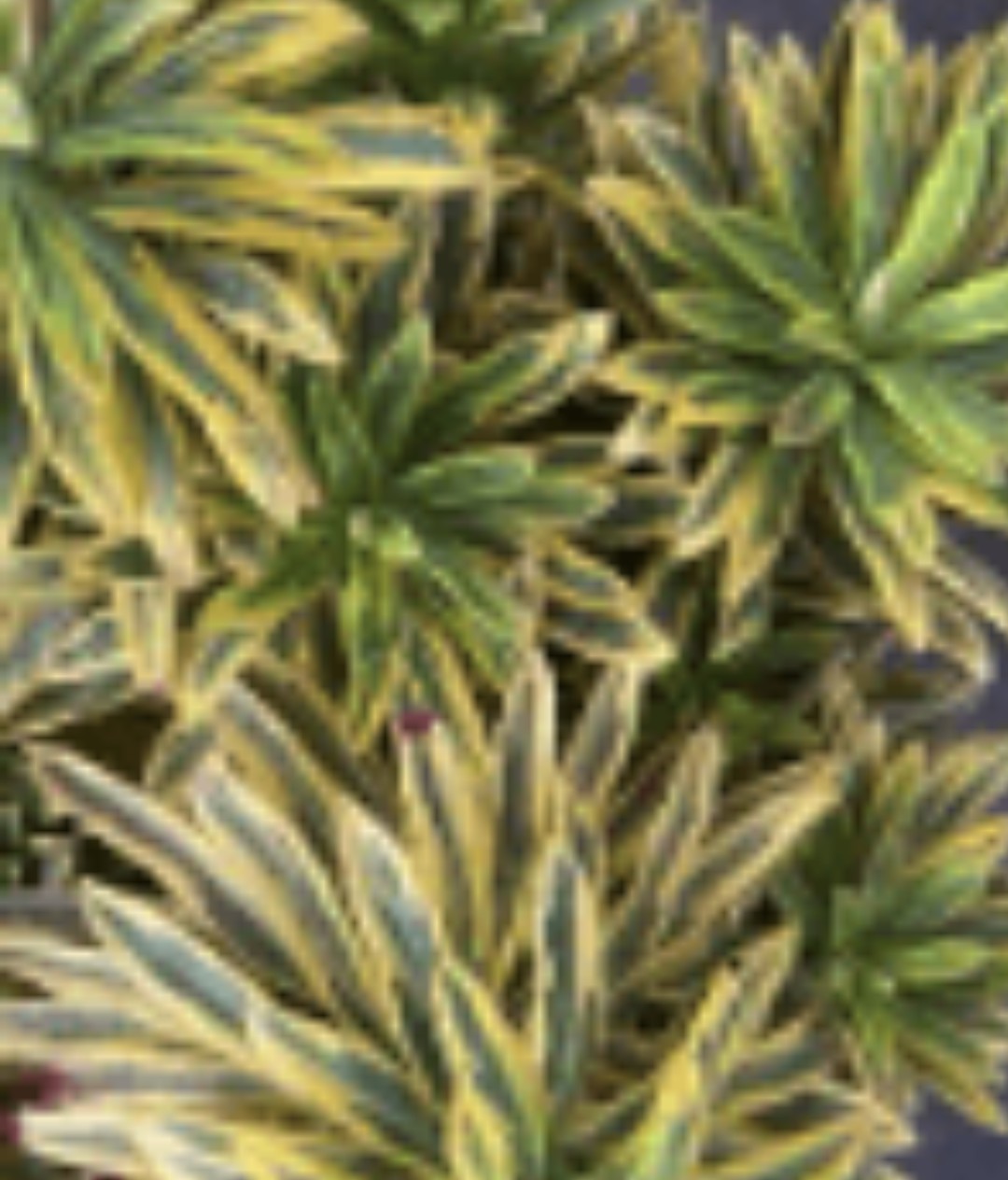
This is a spectacular euphorbia with dramatic bright lime green leaves edged in yellow. In the colder months hints of red or salmon will appear on the leaves. The flowers, or bracts in this case, produce lovely blooms with more yellow and a touch of red. This euphorbia maintains a nice rounded form between 18’ and 24’ tall and wide.
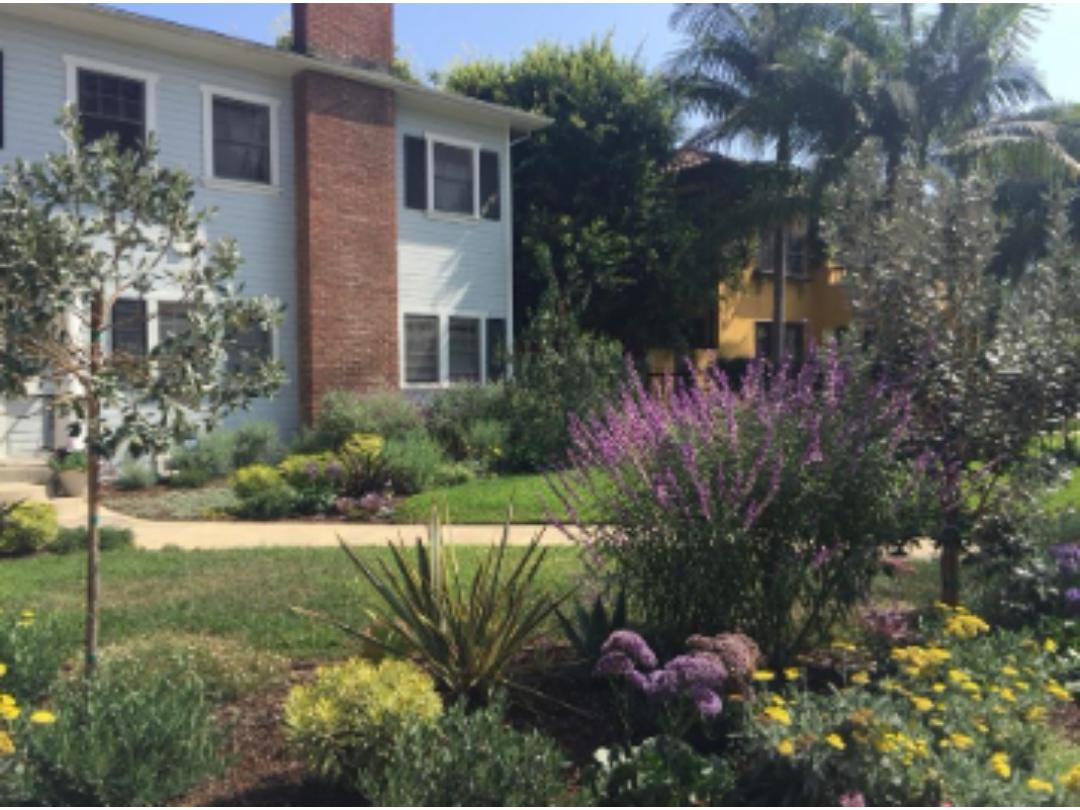
The burgundy red and yellows of the euphorbia could match or contrast with the likes of different phormiums or aeoniums. In this garden you see the yellow in the euphorbia, the phormium and the yarrow. Purples can be seen in the Sea Lavender, Mexican Sage and the succulent Echeveria ‘Afterglow’.
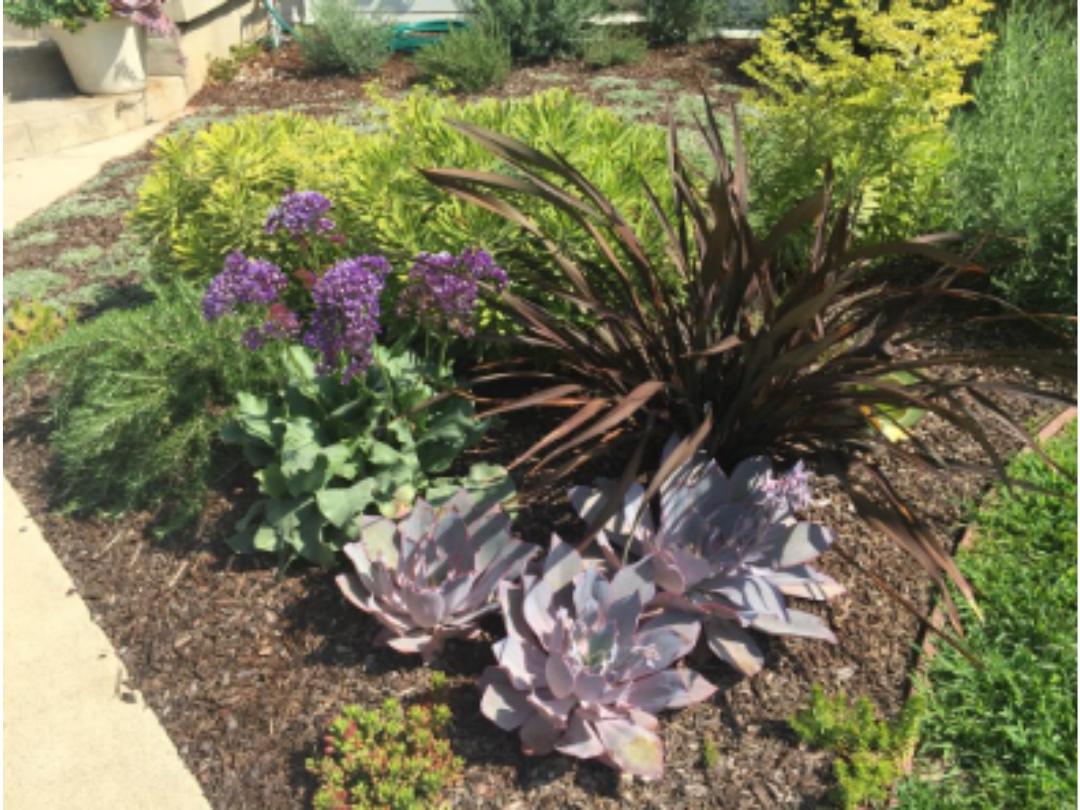
In the garden above, the yellow of euphorbia contrasts with the burgundy in the phormium (Mat’s Merlot). You can also see the lime-green bloom of the euphorbia behind the dark phormium. Lovely!
For more information on the Ascot Rainbow, you can go here.
Euphorbia characias wulfinii
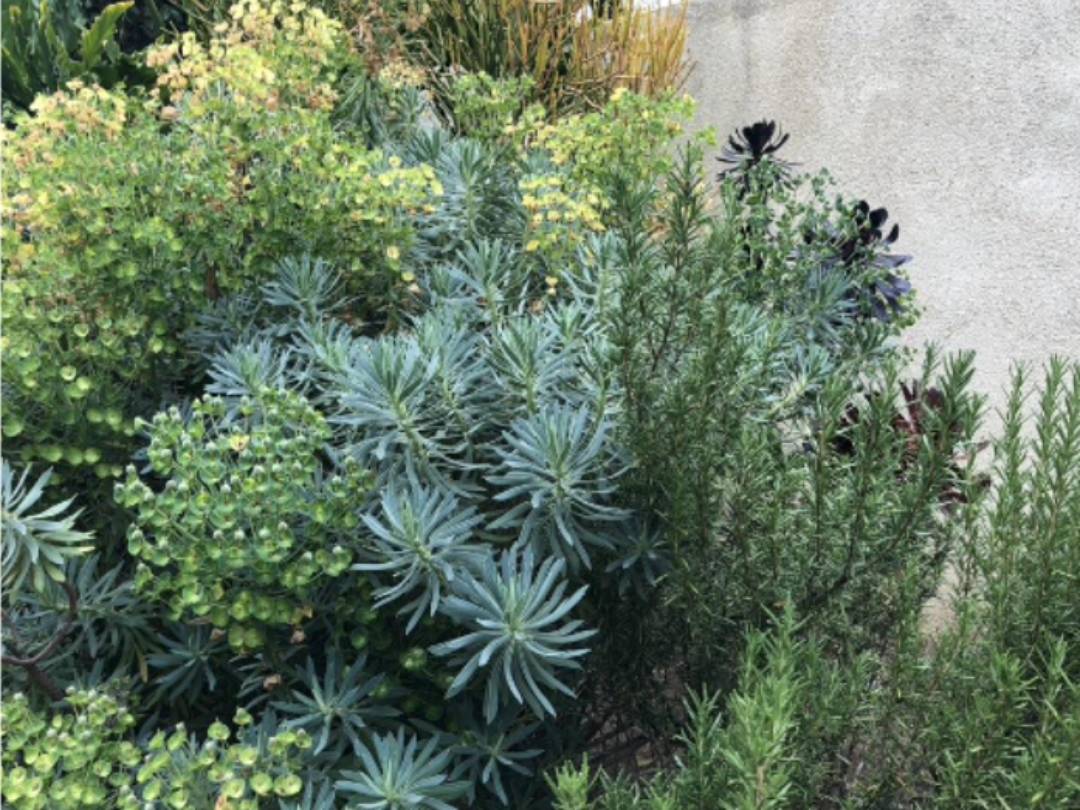
Another favorite of mine is Mediterranean Spurge (Euphorbia characias wulfinii). Stay with me because this is one fine plant. I have planted this type of euphorbia in many gardens for its funky blue-green bottle brush like leaves, a year-round attribute, and the fantastic display of lime-green, chartreuse even, flowers that come in the spring. Like all things, it’s a bit more complicated than that. The actual flower of the plant is a blue-green, it’s the bracts of the flower that give it the eye-catching lime-yellow.
This euphorbia, like the others, is very easy to maintain. It loves the sun and doesn’t demand a lot of water. Plus, it attracts butterflies and hummingbirds, which is interesting given its toxic reputation (then again, we’re talking lowercase toxic here, not TOXIC toxic). It even has nice nectar and pollen for bees.
The Euphorbia wulfinii is a beautiful blue. I love to add more blues to the garden by adding in some Elijah Blue Fescue (Festuca glauca “Elijah Blue”) or the big beautiful rosette look of Agave Blue Fame or the ground cover Blue Chalksticks (Senecio mandraliscae), or maybe adding all of them!
There are euphorbias with deep reds, like Euphorbia ‘Blackbird.’ This is a beautiful plant with rich burgundy in its new growth. Tasmanian Tiger Mediterranean spurge is a lovely variegated type of euphorbia. It has white and green foliage that will brighten up a garden. It would look truly lovely with a white lantana creeping around it. It doesn’t have the bright bracts, but that would seem like an overkill with the foliage.
It can be a cut flower . . . as long as you wear gloves while you harvest!
Tip the ends of the euphorbia in boiling water for about 10 seconds and you’re good to go. The flowers should last about a week.
A particularly nice euphorbia to use in an arrangement is Euphorbia oblongata, which has lovely foliage to help fill the vase. Euphorbia marginata, which has variegated leaves, is also a lovely filler in bouquets.
A quick bouquet from the garden could have some rosemary, a few lavender flowers, an aeonium, and a bit of chartreuse from the bloom of a Mediterranean Spurge.
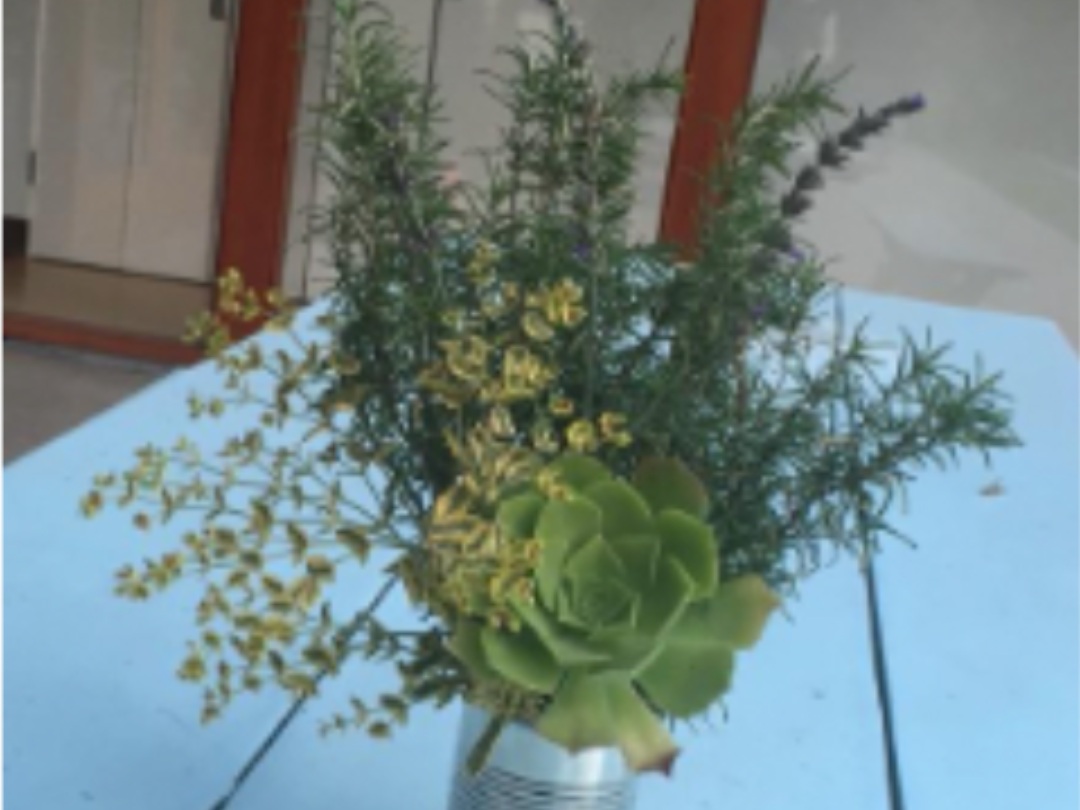
On the Self-Sow
These garden, non-succulent euphorbia plants may self-seed. Meaning, you can find euphorbia popping up in the garden where you didn’t plant them. Most of the time I’m fine with that, that’s how much I like them.
This is not to say they are invasive. It’s a pretty slow self-sow, which is when the plant takes it upon itself to propagate by seed. If you find they are landing where you don’t want them, they are easy to identify and easy to pull. I find it’s much more a reason to plant them than to avoid them.
One Last Euphorbia!
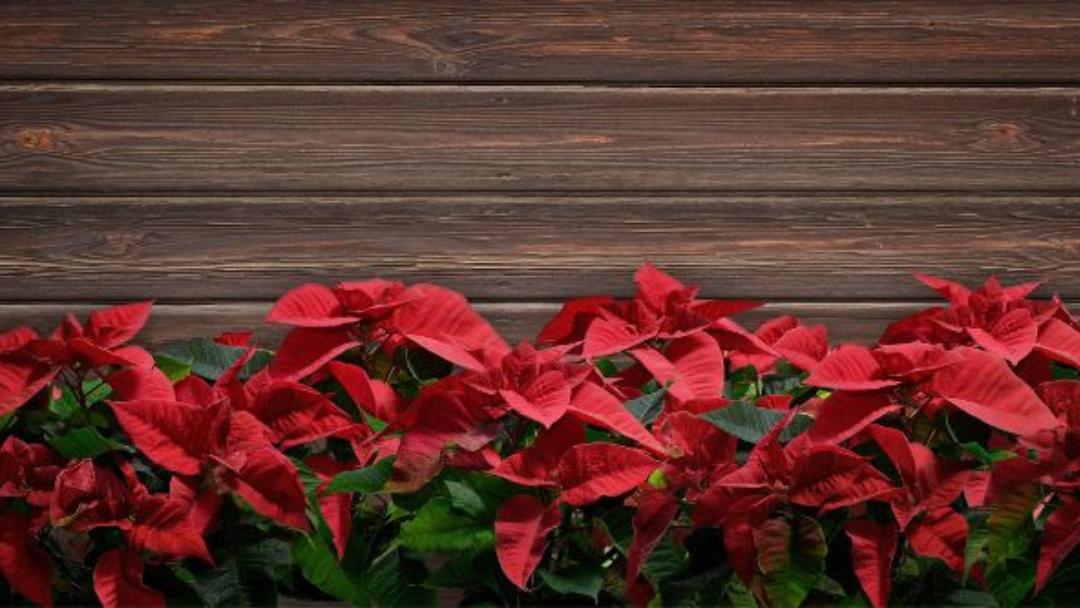
The last euphorbia type I’ll mention is a variety you’re probably familiar with: the Poinsettia. By the way, it’s toxic, too—so be careful not to get its sap on you.
Right around Thanksgiving, you’ll start seeing Poinsettias everywhere (including your local grocery stores) in preparation for the holidays.
The botanical name for the plant is Euphorbia pulcherrima, and there are over 100 varieties available—from the traditional red to white, pink, burgundy, marbled, speckled, and more.
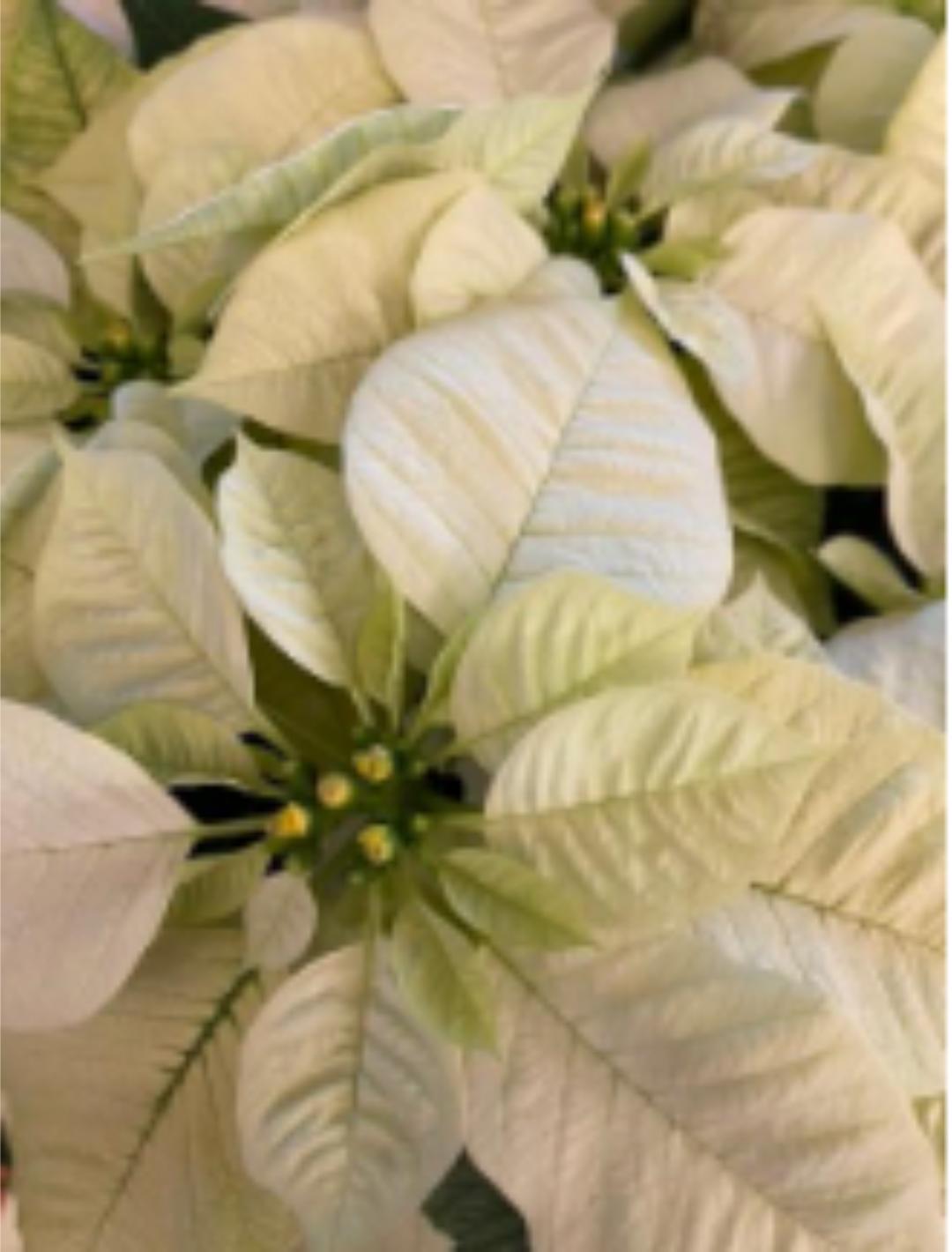
Poinsettia white
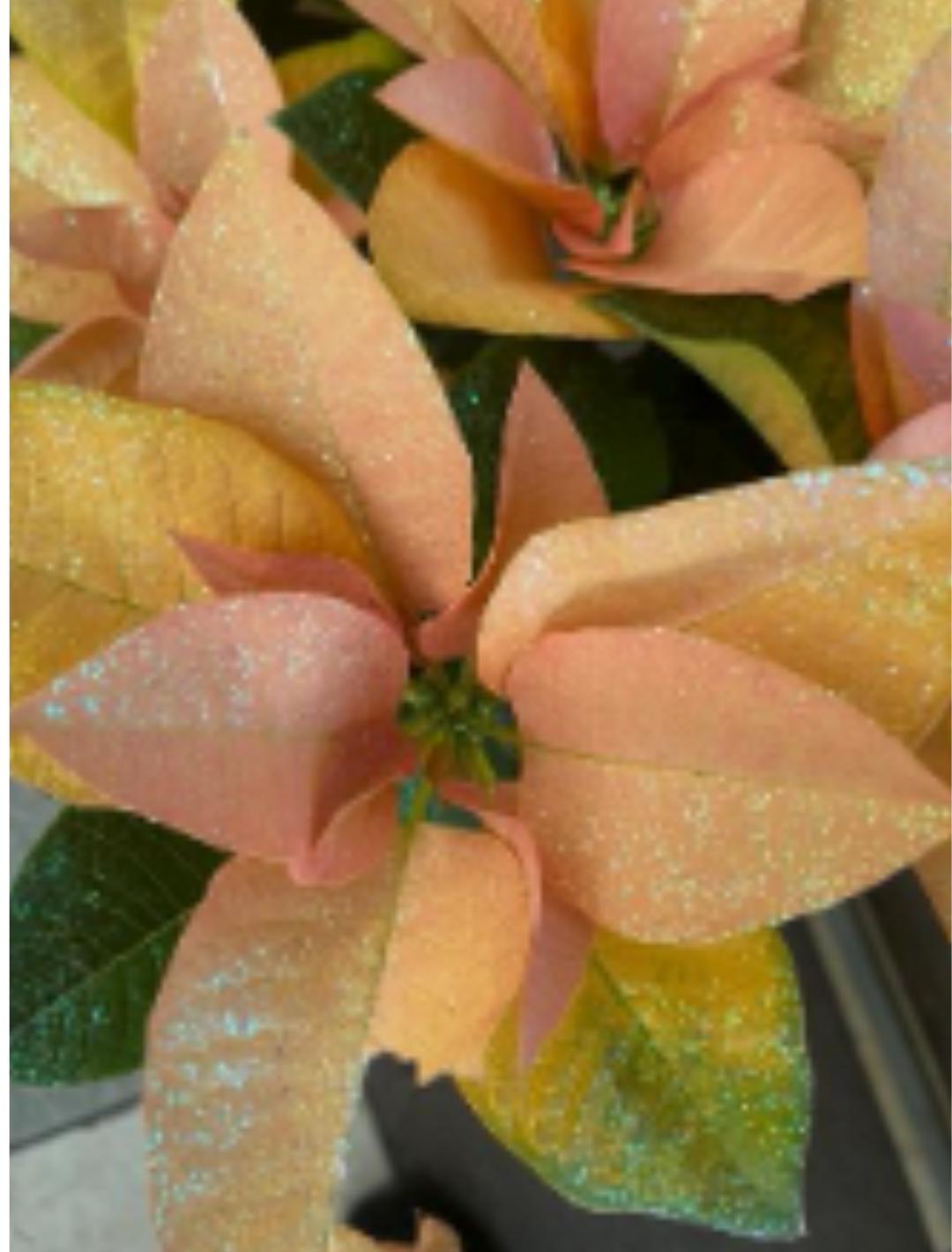
Poinsettia Autumn with glitter
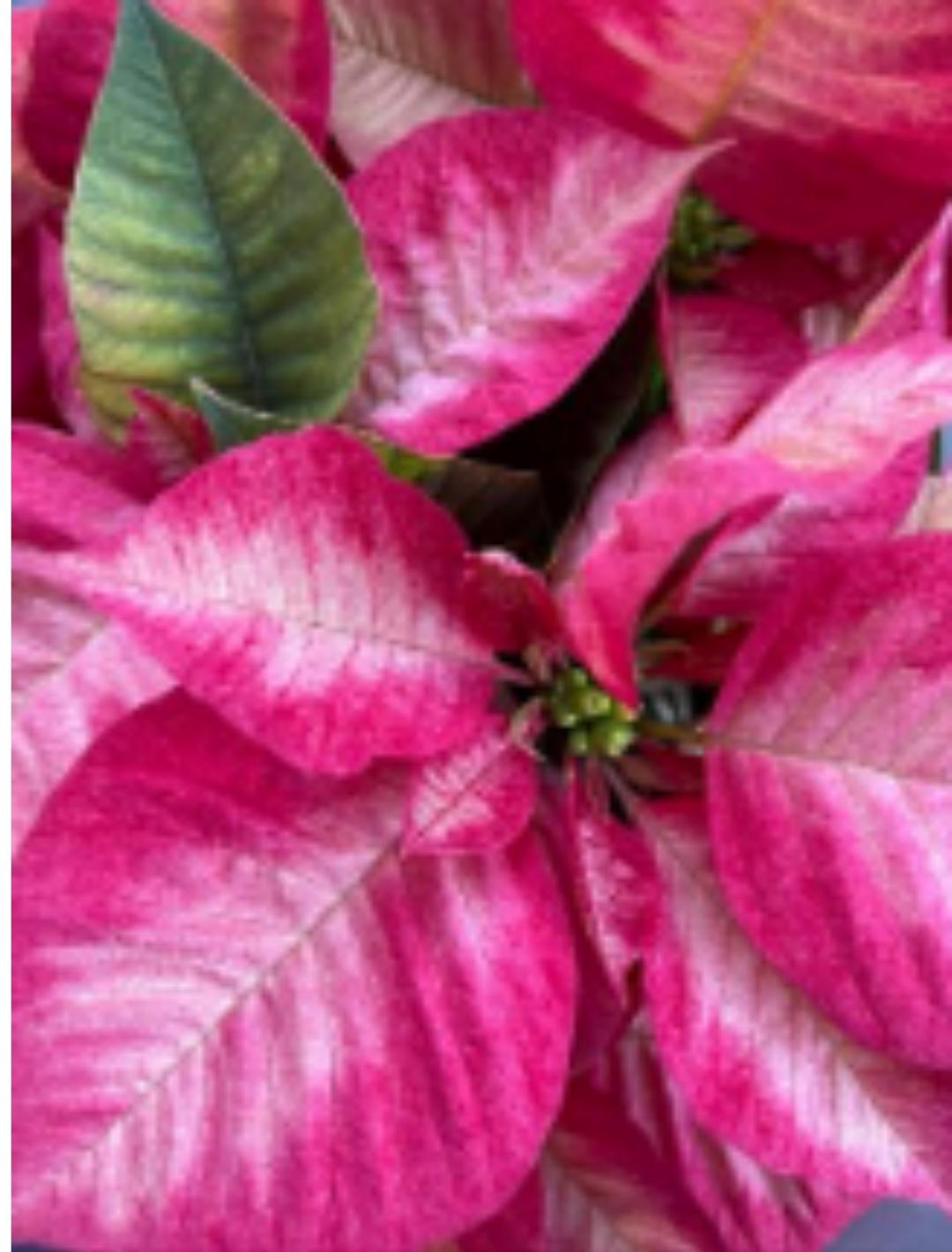
Poinsettia Ice Crystal with peppermint pink blooms with hot pink tips
This interesting red poinsettia is Poinsettia Winter Rose Tremor. The Winter Rose varieties have smaller leaves and bracts which curl under, resembling a big flower. Don’t worry, while this poinsettia comes in the more traditional red, you can also find it in red, white, pink, and marble.
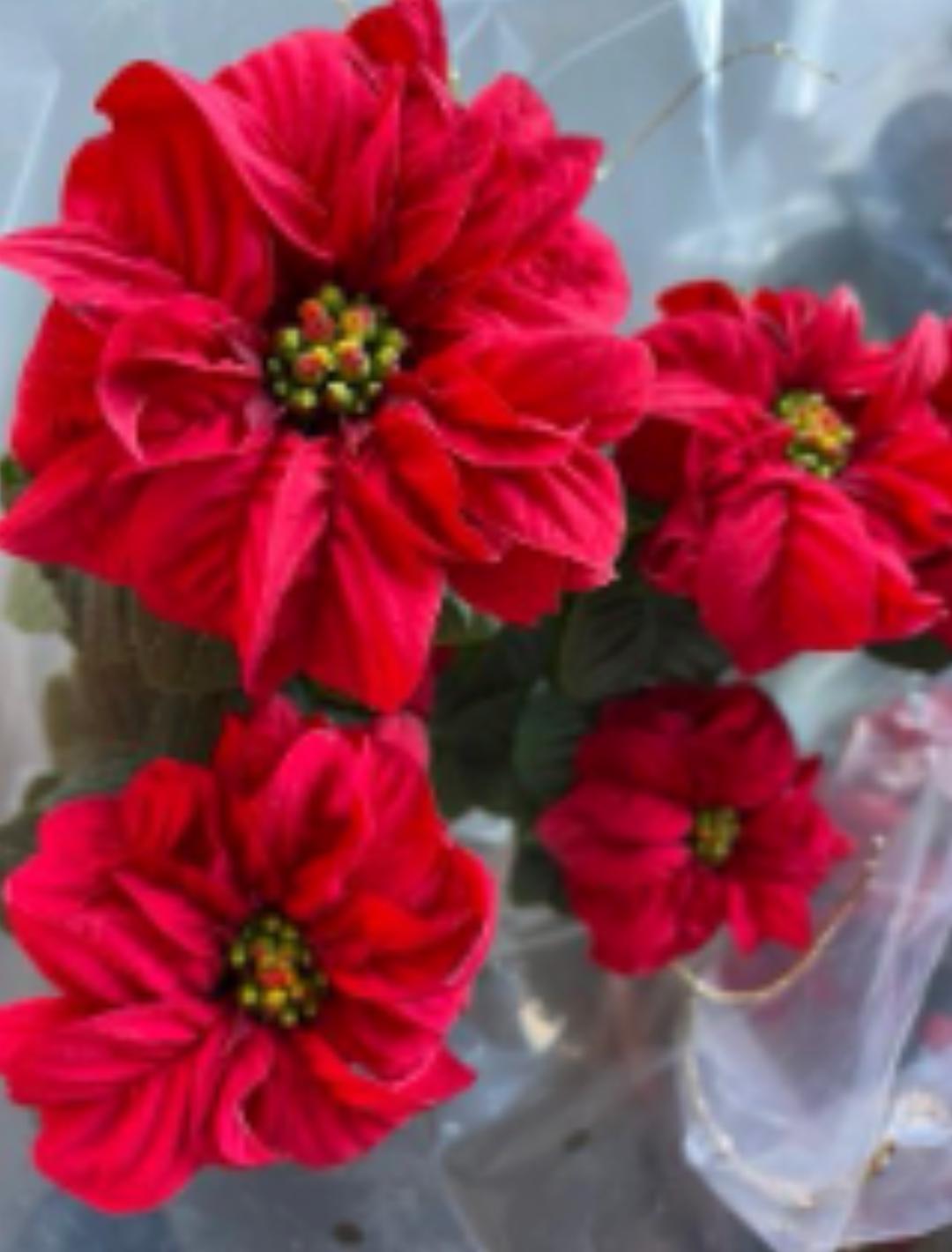
Some types of Poinsettias include:
- Red Poinsettias: Prestige Maroo, Harlequin Red
- Red with splashes of White: Candy Cane
- Pink Poinsettias: Enduring Pink, Princettia Hot Pink, Christmas Glory Pink, Ice Crystal
- White with Pink Poinsettias: Premium Picasso, Sparkling Punch
- Cream with Pink Poinsettias: Christmas Beauty Marble, Marblestar, Premium Marble, Winter Rose Marble
- Yellow Poinsettias: Candy Wintergreen, Golden Glow
- White Poinsettias: Jack Frost, Polar Bear
- Orange Poinsettias: ‘Autumn Leaves”, Orange Spice
Where should you put your Poinsettia? Put this euphorbia in bright indirect light if you want to keep it healthy.
What about watering? You don’t want to overwater, so let the top ½ of the soil dry out between watering. Too much water, and you’ll see the leaves drop off! Too little water, and the plant will start to droop and then everything will start falling off.
Who should you put with your Poinsettia? More plant combos! If there is extra room in your planter, consider sticking a Christmas Cactus in with your poinsettia. Or trail some ivy over the planter. Boston fern is another great addition.
Where can you buy Poinsettias? Almost anywhere. But you can check out these online sites:
- Costafarms.com
- Whiteflowerfarm.com
- Walmart.com
Want more information about Poinsettias? Go here.
Get your hands dirty . . . and plant some euphorbia!
You can start the succulent, or seed the perennial. Plantworld Seeds is a great place to purchase euphorbia seeds online. They have a few options, including the Euphorbia Characias Wulfenii and a deep burgundy euphorbia called Euphorbia Amygdaloides Purpurea.
You could also take the easy route and buy the plant! If you can’t find some at your local nursery, try online at Plants Express, or even Amazon.
Don’t forget your gloves! Womanswork has a variety of wonderful gloves, one of them is a buttery soft glove you can find here.
Now go enjoy some retail therapy – and find your own garden euphorbia!

